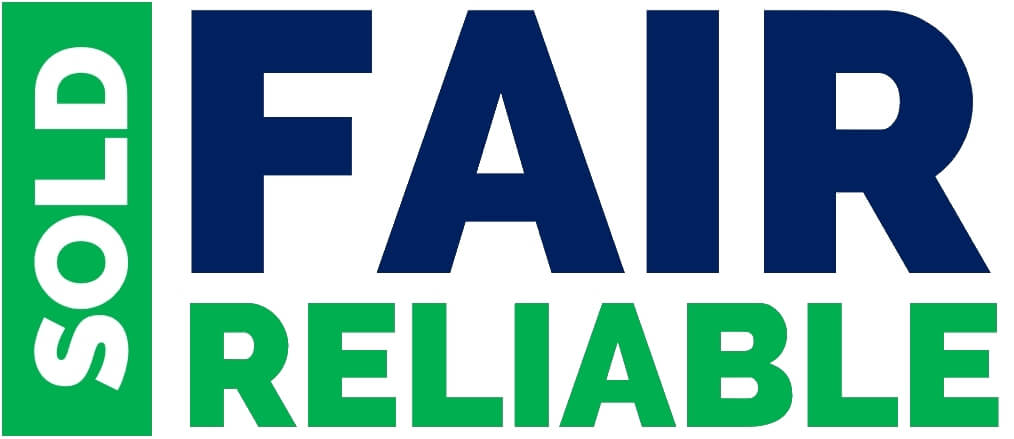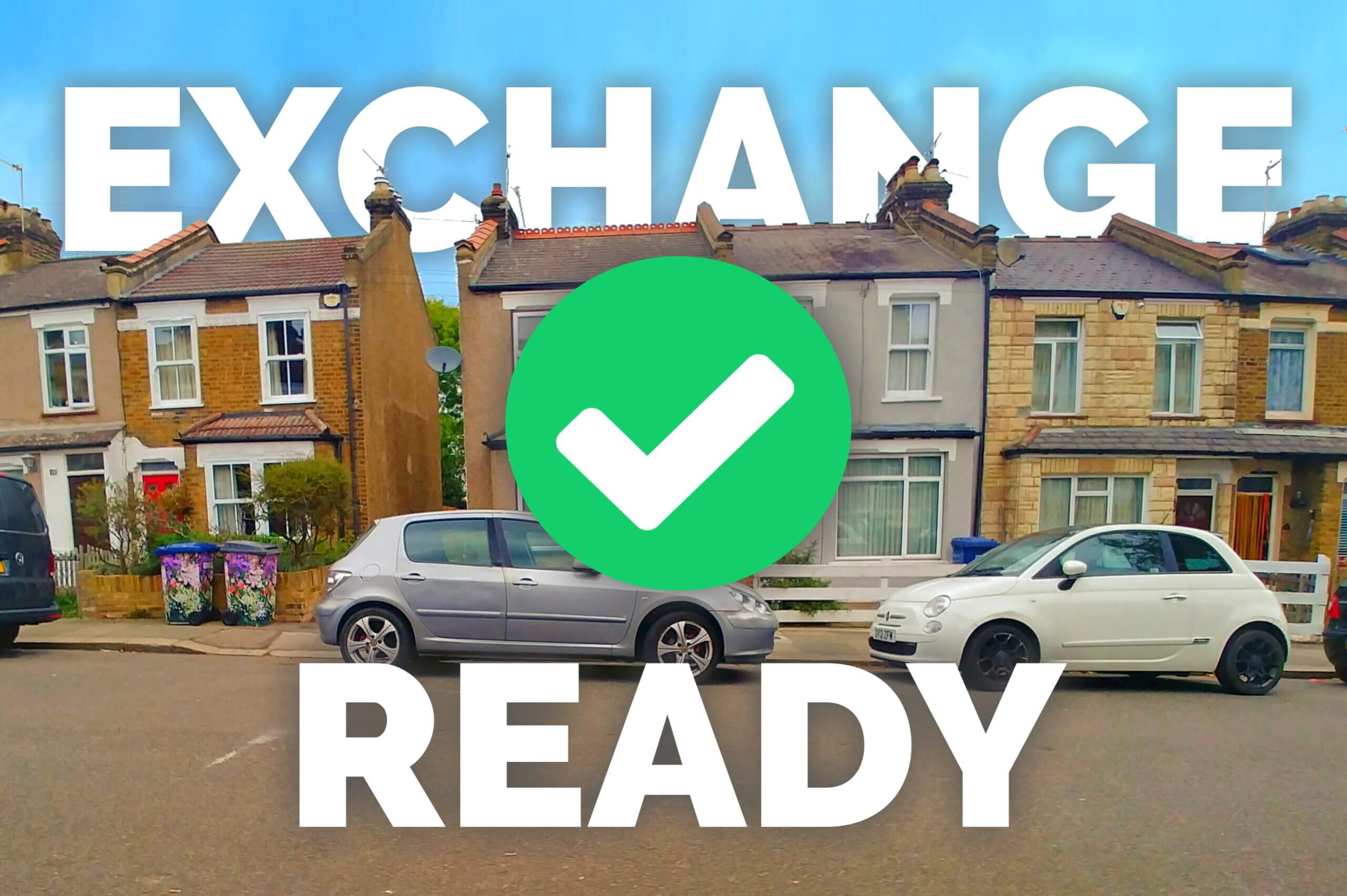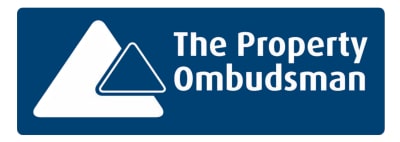Selling a flat with a defective lease?
- Cost effective
No upfront fee & sell for free options - Quick
Sell your property in as little as 28 days - Secure & reliable
Legally binding sale on auction day - Fair & transparent
Sold to the highest bidder
For your peace of mind we are a member of The Property Ombudsman


Selling by auction is quick and easy. Request a no-obligation auction sale estimate for your house or flat.
- Reliable
- Fast
- Secure
Interested to learn more about the easy and efficient process of selling your property by auction?
Talk to our team on 0800 862 0206
Home: Auction Link » Property Types » Selling a Flat with a Defective Lease
Introduction: Selling a Flat with a Defective Lease
Selling a flat with a defective lease can be challenging, as many buyers (and mortgage lenders) are wary of lease issues. Whether the problem involves a short lease, restrictive clauses, or legal defects, it can significantly impact the property’s marketability and value. Traditional sales methods may take months or even fall through due to legal complications.
This is where selling at auction becomes an attractive alternative. Auctions provide a transparent, fast, and competitive environment where buyers are often investors or cash buyers who are more willing to take on properties with lease issues. With a fixed timeline, a high chance of securing a sale, and no lengthy negotiations, auctioning a flat with a defective lease can be the most efficient and profitable route for sellers.
Jump to section: Frequently Asked Questions

Understanding a Defective Lease
A defective lease refers to a leasehold agreement that contains errors, omissions, or terms that make the property difficult to mortgage, sell, or live in. A lease is a legally binding contract, and any defects within it can cause significant financial and legal complications.
Free auction estimate
Request a free valuation and reserve price estimate for your property today. In some cases we may need a few more details about your property before providing a free and no-obligation auction sale estimate.
Types of Defective Leases
There are several types of lease defects, each presenting unique challenges:
1. Ground Rent Issues
Some leases contain escalating ground rent clauses that can make the property unaffordable. A common example is the ‘doubling ground rent’ clause, where the rent increases exponentially over time, making the flat unsellable to mortgage buyers. In extreme cases, ground rent clauses can exceed lender affordability thresholds, making it impossible for a prospective buyer to secure financing. The UK government has introduced legislation to cap excessive ground rent, but existing leases still pose significant problems.
Examples of ground rent issues include:
- Doubling ground rent clauses – A lease may stipulate that ground rent doubles every 10 years, leading to unmanageable costs over time.
- High starting ground rent – Some leases begin with a disproportionately high ground rent that escalates quickly, deterring buyers and lenders.
- Unclear ground rent review clauses – If the lease does not specify a clear formula for calculating future rent increases, leaseholders may face unexpected and steep rises in cost.
2. Breach of Lease Terms
If the leaseholder or freeholder has breached any lease terms, such as failing to maintain the building, the lease may be considered defective. An example would be a lease requiring a reserve fund for major repairs, but the freeholder never setting one up. This can leave leaseholders vulnerable to unexpected repair costs, making the property less attractive to potential buyers.
Examples of breaches of lease terms include:
- Failure to maintain the building – If the leaseholder or freeholder neglects required maintenance, it can lead to safety hazards, deterioration of the property, and disputes over responsibility.
- Non-compliance with insurance requirements – Some leases require the freeholder or leaseholder to maintain specific building insurance, and failure to do so can result in legal and financial consequences.
- Unauthorized alterations – If a leaseholder makes significant structural changes to the property without obtaining necessary approvals, it may be considered a breach, potentially leading to enforcement actions or lease invalidation.
3. Inadequate Rights of Access or Services
Some leases fail to grant sufficient rights of access to communal areas or utilities. For instance, if the lease does not explicitly grant the right to use the stairwell, a lender may refuse to finance the property. Additionally, if a lease does not provide clear provisions for essential services like drainage or waste disposal, it can create significant living and resale challenges.
Examples of inadequate rights of access or services include:
- Lack of access to communal areas – If a lease does not explicitly grant access to hallways, stairwells, or shared gardens, leaseholders may face restrictions in using or maintaining these spaces.
- Missing rights to essential services – If the lease fails to grant rights for connection to drainage, water, or electricity infrastructure, leaseholders may struggle to access basic utilities.
- Ambiguous provisions for emergency access – Some leases do not specify rights for emergency access routes, which can create safety concerns and complications for leaseholders in urgent situations.
4. Unclear or Missing Clauses
If a lease is missing essential clauses, such as those detailing the maintenance responsibilities for common areas, it may be deemed defective. For instance, if the lease does not specify whether the freeholder or leaseholder is responsible for maintaining the roof, this uncertainty can lead to disputes and legal action. Mortgage lenders often flag such ambiguities as unacceptable risks.
Examples of unclear or missing clauses include:
- Undefined maintenance responsibilities – If the lease does not clearly state who is responsible for repairs, conflicts can arise between leaseholders and freeholders over costly maintenance obligations.
- Ambiguous lease renewal terms – Some leases fail to specify the conditions or process for lease renewal, leaving leaseholders uncertain about their rights and future property security.
- Omissions in service charge provisions – If the lease does not outline what is included in the service charges or how they are calculated, leaseholders may face unexpected financial burdens or disputes with the freeholder.
5. Unreasonable Service Charges
Some leases impose unfair or arbitrary service charges that may render the property difficult to sell. Service charges that are poorly defined or allow excessive fee increases without justification can deter buyers. In some cases, leaseholders have successfully challenged unfair charges in the First-Tier Tribunal, but this can be a lengthy and costly process.
Examples of unreasonable service charges include:
- Lack of transparency in service charge breakdowns – If the lease does not require the freeholder to provide an itemized statement of charges, leaseholders may struggle to understand or contest the fees.
- Excessive or arbitrary increases – Some leases allow service charges to be increased without clear justification, leading to unpredictable financial burdens for leaseholders.
- Unjustified management fees – High or unnecessary management fees imposed by the freeholder can significantly raise the overall cost of service charges, making the property less attractive to potential buyers.
6. Cladding and Fire Safety Issues
Following the Grenfell Tower tragedy, many leaseholders have discovered that their flats have cladding or fire safety defects. If a lease does not clearly define responsibility for remediation costs, leaseholders may face significant financial burdens. Mortgage lenders often refuse to finance flats affected by such issues unless a remediation plan is in place, further limiting potential buyers.
Examples of cladding and fire safety issues include:
- Unclear responsibility for remediation – Some leases do not specify whether the leaseholder or freeholder is responsible for the removal and replacement of unsafe cladding, leading to costly legal battles.
- Inadequate fire safety provisions – If a lease lacks clear requirements for fire risk assessments, fire doors, or other safety measures, leaseholders may struggle to comply with regulations and ensure safety.
- Impact on property value and sales – Properties with unresolved cladding issues often see significantly reduced market value, and many lenders refuse mortgages on such properties, making them difficult to sell.
7. Service Charge & Maintenance Defects
Leases should clearly define how service charges are calculated and what they cover. If the lease is vague or the freeholder imposes arbitrary or excessive charges, buyers may be deterred. A defective lease may also fail to specify maintenance responsibilities, leading to disputes over major repairs and upkeep costs.
Examples of service charge & maintenance defects include:
- Unclear calculation methods – If the lease does not specify how service charges are determined, leaseholders may face unexpected and escalating costs.
- Disputes over major repair responsibilities – When a lease lacks clear provisions about who is responsible for major structural repairs, leaseholders may face financial and legal challenges.
- Inadequate maintenance provisions – Some leases do not set out minimum maintenance standards or timelines, resulting in poorly maintained properties and potential safety hazards.
8. Absent or Missing Freeholder
If a freeholder is absent or uncontactable, leaseholders may struggle to get approvals for lease extensions or repairs. This can lead to delays in transactions, difficulty in obtaining building insurance, and long-term management issues.
Examples of issues arising from an absent or missing freeholder include:
- Challenges in lease extension approvals – Leaseholders may find it difficult to extend their lease if they cannot reach the freeholder, potentially affecting property value and mortgage eligibility.
- Difficulty obtaining building insurance – Without a freeholder to arrange or approve building insurance, leaseholders may struggle to secure appropriate coverage, increasing financial risk.
- Problems with property management – Essential maintenance, dispute resolution, and service charge management may be severely affected when the freeholder is absent, leading to property deterioration and legal complications.
9. Lacking Repairing Covenants
A lease should specify who is responsible for repairs and maintenance of the building’s structure and common areas. If these provisions are unclear or missing, disputes may arise over who bears the costs, which can make mortgage lenders wary and deter buyers.
Examples of lacking repairing covenants include:
- Unclear responsibility for structural repairs – If the lease does not specify whether the freeholder or leaseholder is responsible for maintaining the roof or foundations, disputes and delays in necessary maintenance can arise.
- Undefined maintenance obligations for communal areas – Some leases fail to clarify who is responsible for the upkeep of shared hallways, gardens, or exteriors, leading to neglected properties and possible legal conflicts.
- Ambiguous repair cost allocation – If the lease does not outline how repair costs should be divided among leaseholders, disagreements and unexpected financial burdens may emerge, making the property less attractive to buyers.
10. Defective Lease Plan
A lease plan must accurately depict the boundaries of the property and any communal areas. If the plan is unclear or incorrect, legal disputes can arise over access rights and property boundaries, leading to complications when selling or remortgaging the flat.
Examples of defective lease plans include:
- Inaccurate property boundaries – If the lease plan does not precisely define the property limits, disputes may arise with neighbors over land ownership or usage rights.
- Omissions of communal areas – Some lease plans fail to include essential shared spaces such as gardens, parking areas, or stairwells, leading to uncertainty over access and responsibilities.
- Discrepancies between lease documents and actual layout – When the lease plan does not match the physical property layout, it can create legal and financial complications, especially when seeking mortgage approval or selling the property.
11. Short Leases
A lease with fewer than 80 years remaining is often not considered a legal defect and is not strictly “defective.” However, a short lease can make selling the property more difficult compared to one with a long lease. Mortgage lenders typically require a lease to have at least 80 years remaining to approve financing, which means flats with shorter leases are often only marketable to cash buyers. Additionally, lease extensions become more expensive once the lease falls below 80 years due to ‘marriage value’—a legal term referring to the additional value created when a lease is extended. While a short lease does not always indicate a defective lease, it significantly affects the property’s desirability and marketability.
Examples of short lease issues include:
- Increased cost of lease extension – As a lease term shortens, extending it becomes increasingly expensive, particularly when it falls below the 80-year threshold due to marriage value calculations.
- Reduced mortgage availability – Many mortgage lenders refuse to provide financing for properties with short leases, limiting the pool of potential buyers and often forcing sales to cash buyers.
- Lower property value – Properties with short leases generally have lower market values compared to those with long leases, making them less attractive to potential buyers and investors.
12. Term and Extension Issues
Errors in the lease’s term and extension provisions can create significant legal and financial issues. Examples include:
- Incorrect start or end dates – If the lease documents contain an incorrect start or expiration date, disputes may arise when leaseholders seek extensions or mortgage lenders assess the lease length.
- Missing or unclear extension rights – If a lease does not specify the leaseholder’s right to extend, it can lead to complications when trying to extend the lease or sell the property. Some leases may contain ambiguous extension clauses that make it difficult for leaseholders to secure an extension without legal intervention.
13. Party Wall and Access Problems
Leases should define clear rights of access for maintenance and clarify boundaries between properties. Common issues include:
- Insufficient rights of access for maintenance – If the lease does not explicitly grant access rights to maintain external walls, roofs, or shared areas, leaseholders may struggle to perform essential repairs or improvements.
- Unclear boundaries between properties – If the lease does not precisely define property boundaries, disputes may arise between neighbours regarding responsibility for walls, fences, or shared spaces.
- Missing or problematic party wall provisions – A lease should specify whether a leaseholder has the right to alter or maintain a shared wall. If such provisions are missing or unclear, conflicts may arise over modifications, structural integrity, or maintenance responsibilities.
Defective leases can create serious obstacles for leaseholders, affecting property value, financing options, and overall marketability. Understanding and addressing these issues is crucial to ensuring a smooth transaction process and protecting the rights of all parties involved.
Read our guide to selling a short lease flat
Our guide is designed to assist homeowners in navigating the sale of a short lease flat, and the pros and cons of selling by auction.
Read more about selling a short lease flat by auction.
Relevant Legislation on Defective Leases
Several key pieces of legislation govern defective leases in the UK, each addressing specific issues and providing legal remedies for leaseholders:
- The Leasehold Reform, Housing and Urban Development Act 1993 – This Act allows leaseholders of flats to extend their lease by an additional 90 years at a peppercorn ground rent. It also enables leaseholders to collectively buy the freehold of their building, thereby resolving many lease defects related to ground rent, absent freeholders, and maintenance responsibilities.
- The Landlord and Tenant Act 1985 – This Act sets out the statutory rights and obligations of landlords and tenants, particularly in relation to service charges and maintenance. If a lease has unreasonable service charges or lacks clarity on repair responsibilities, this legislation can provide a basis for legal action.
- The Building Safety Act 2022 – Following the Grenfell Tower disaster, this Act introduces protections for leaseholders in high-rise buildings affected by fire safety defects, including cladding issues. If a defective lease fails to assign responsibility for fire safety remediation, this legislation helps determine liability and limits costs for leaseholders.
- The Commonhold and Leasehold Reform Act 2002 – This Act enhances leaseholder protections by reforming leasehold management, making it easier to challenge unreasonable service charges, and providing leaseholders with more control over property management through Right to Manage (RTM) provisions. This is particularly useful where the freeholder is absent or unresponsive.
- The Law of Property Act 1925 – This fundamental piece of property law governs leasehold tenure and dictates how leases operate, including provisions for correcting defective leases through deeds of variation or legal reformation.
- The Housing Act 1988 – This Act impacts leasehold properties with assured tenancy clauses, which can sometimes make a lease defective if it inadvertently creates a tenancy rather than a leasehold interest. Resolving such issues often requires legal intervention.
Each of these laws provides mechanisms for addressing common lease defects, whether through legal claims, lease extensions, or collective enfranchisement. Understanding how they apply can help leaseholders navigate the complexities of defective leases and choose the best route to resolution.
Can I Sell a Flat with a Defective Lease As Is?
Yes, a flat with a defective lease can be sold in its current state, but it will likely appeal only to cash buyers or investors who understand the implications. Most mortgage lenders will refuse to finance properties with defective leases, significantly reducing the pool of potential buyers.
When selling a flat with a defective lease, the seller must disclose all known issues to potential buyers. The price of the property will typically be lower to reflect the risk and cost associated with rectifying the lease defect. In many cases, buyers may negotiate a reduced price to account for the cost of lease extension or legal remedies required to fix the defect.
Additionally, a defective lease may prolong the selling process. Buyers will often conduct thorough legal due diligence, which could result in additional legal fees and extended negotiation periods. In some cases, prospective buyers may withdraw from the transaction if they perceive the lease defect as too complex or costly to resolve.
Given these challenges, sellers may choose to explore alternative options, such as obtaining a deed of variation, extending the lease prior to sale, or engaging specialist property investors who are experienced in acquiring properties with legal complications.

How a Defective Lease Affects the Sale Price
A defective lease can have a substantial impact on the sale price of a property. The extent of the reduction depends on the nature of the defect, the ability to rectify it, and the willingness of buyers to take on the risk. Here’s how different lease defects can influence property value:
1. Reduced Market Value – Properties with defective leases typically sell for less than comparable properties with sound leases. Depending on the severity of the defect, the discount can range from 10% to 50% or more. Buyers factor in the costs and risks associated with rectifying the lease issue when making offers.
2. Limited Buyer Pool – Many buyers, especially those relying on mortgage financing, are unable or unwilling to purchase a property with a defective lease. This limits the market to cash buyers and investors, who often seek a bargain to compensate for the additional legal and administrative work required to resolve the defect.
3. Lease Extension Costs Impact Pricing – If a lease is short, the cost of extending it affects the sale price. Buyers will deduct these costs from their offer, and if the lease has fallen below 80 years, the addition of ‘marriage value’ significantly increases the cost of extension, further depressing the property’s value.
4. Legal Risks Lower Buyer Confidence – If the lease contains unclear clauses, escalating ground rent terms, or inadequate repairing covenants, buyers may perceive it as a legal risk, leading to further downward pressure on price. Buyers may also require an indemnity policy, adding to their costs.
5. Auctions and Cash Buyers Expect a Discount – When selling at auction or to cash buyers, pricing must reflect the additional risk they assume. While an auction can generate competitive bidding, serious defects will still result in a lower final price than a similar property with a sound lease.
6. Delays Can Lead to Further Price Reductions – If a sale is delayed due to legal issues, buyers may renegotiate the price downwards or withdraw altogether. This is particularly common in private treaty sales, where buyers conduct due diligence after making an offer, increasing the likelihood of price adjustments or failed transactions.
7. Effect of Freeholder Cooperation – If the freeholder is cooperative and willing to rectify the defect or grant a lease extension, the impact on sale price may be less severe. However, if the freeholder is absent or unresponsive, the uncertainty can significantly diminish the property’s value.
Sellers should carefully assess the financial implications of a defective lease on the sale price and consider whether rectifying the defect before sale may yield a better financial outcome. Consulting a solicitor and a specialist estate agent can help in setting a realistic asking price and selecting the best method to market the property.
How Do I Sell a Flat with a Defective Lease?
There are several options for selling a flat with a defective lease, and the best approach depends on the type and severity of the defect, as well as the seller’s financial and time constraints.
1. Fix the Defect Before Selling – If the lease defect can be corrected relatively quickly and affordably, this is often the best option. A leaseholder may be able to extend the lease, negotiate a deed of variation, or challenge unfair terms through the First-Tier Tribunal (Property Chamber). Fixing the defect can open up the property to a wider pool of buyers, including those needing mortgage financing, and may increase its value.
2. Sell to a Cash Buyer – Cash buyers, including property investors and specialist firms, often purchase properties with defective leases at a discount. These buyers are experienced in dealing with lease complications and may seek to remedy the defects themselves before reselling or renting out the property. The main advantage of selling to a cash buyer is the speed of transaction, as mortgage approval is not required.
3. Sell at Auction – Auctions can be an effective way to sell a flat with a defective lease, particularly if the defect is well-documented and disclosed upfront. Auction buyers tend to be investors looking for properties at competitive prices, and the legally binding nature of auction sales ensures certainty once a winning bid is placed. However, if the lease defect is severe (e.g., an extremely short lease or legal disputes), the property may struggle to attract bidders or achieve a satisfactory price.
4. Sell via an Estate Agent with Full Disclosure – If the defect is minor or likely to be acceptable to certain buyers, selling through an estate agent may still be an option. The key here is transparency—potential buyers must be informed of the lease issue and any potential costs associated with fixing it. Some buyers may still be willing to proceed, especially if they can negotiate a lower price or if the defect is resolvable post-purchase.
Each option has its advantages and challenges. Sellers must weigh factors such as time constraints, financial implications, and the likelihood of securing a buyer willing to take on a defective lease. Seeking legal advice and consulting property professionals can provide clarity on the best course of action.

Does a Defective Lease Require a Cash Buyer?
In most cases, yes. Mortgage lenders are unlikely to approve loans for properties with defective leases due to the associated risks. Cash buyers, however, are more flexible and can move forward with the purchase without lender restrictions.
Mortgage lenders assess risk based on the condition of the lease, and defects such as short lease terms, missing clauses, or unreasonable ground rent escalations often lead to an automatic rejection of financing applications. Lenders typically require leases to be at least 80 years long, free from legal ambiguities, and structured in a way that does not expose buyers to excessive financial obligations.
Because of these constraints, selling to a cash buyer is often the fastest and most viable option. Cash buyers, including property investors and developers, are usually familiar with lease defects and are willing to take on the risk in exchange for a discounted price. They may choose to resolve the lease issues themselves before reselling or renting out the property.
However, selling to a cash buyer typically results in a lower selling price than a property that is mortgageable. Cash buyers expect a discount to compensate for the additional legal and financial risks they are assuming. Sellers should be prepared to negotiate accordingly and may need legal advice to ensure that all necessary disclosures are made to avoid disputes post-sale.
It is also worth noting that some specialist lenders may provide bridging loans or short-term finance solutions for properties with defective leases. These options, while limited, could allow a buyer to secure the property while working towards fixing the lease issues to obtain long-term financing.
Can I Sell a Flat with a Defective Lease by Auction?
Yes, selling a flat with a defective lease at auction can be a viable option, especially as auctions attract a large number of cash buyers who are less concerned about mortgageability. The auction process ensures transparency, as all relevant legal details must be provided in the legal pack before bidding begins. Buyers are deemed to have reviewed all available information and conducted due diligence before placing a bid, and once the hammer falls, the sale is legally binding.
One of the key advantages of selling at auction is the speed of the transaction. Auctions follow a set timeline, and completion usually takes place within 28 days of the auction date. This can be significantly faster than private treaty sales, which can be delayed due to mortgage approvals and prolonged negotiations.
However, there are some challenges. If the lease defect is severe, such as an extremely short lease or a missing freeholder, some buyers may still be deterred unless they can secure the property at a significant discount. Additionally, auction fees and legal costs must be factored into the overall sale strategy.
To maximise success at auction, sellers should work with a solicitor to prepare a comprehensive legal pack, ensuring that any lease extension quotes, deeds of variation, or correspondence with the freeholder are included. This can help attract more bidders and achieve a competitive sale price.
Short on time?
If you don’t have the time to read this article in full, we can come back to you with a free auction appraisal, to help you decide if selling by auction is a good option for you. Request a free estimate and we’ll come back to you.
How Long Does It Take to Sell a Flat with a Defective Lease?
The time required to sell a flat with a defective lease depends on several factors, including the nature of the defect, the chosen method of sale, and the responsiveness of the freeholder or legal parties involved. Below is an estimate of timelines for different methods:
- Fixing the Lease First – This process can take between 3 to 12 months, depending on the complexity of the defect. Lease extensions, for example, may involve negotiations with the freeholder, valuation assessments, and legal paperwork, which can significantly extend the timeframe. If a deed of variation is required, this could take several months, particularly if the freeholder is unresponsive or disputes arise.
- Selling to a Cash Buyer – Selling to a cash buyer is one of the fastest routes, typically taking 4 to 8 weeks. Cash buyers often specialise in purchasing properties with legal complications and are not reliant on mortgage approvals, which speeds up the process. However, sales may still take time if buyers conduct detailed due diligence or if negotiations on price become protracted.
- Selling at Auction – The auction process itself takes around 4 to 6 weeks, but completion must occur within 28 days after a winning bid. This means that, from listing the property to receiving funds, the total timeline could range from 6 to 10 weeks. Auctions provide certainty in timing but may not always achieve the highest possible sale price.
If a lease defect is particularly severe—such as an absent freeholder, major legal ambiguities, or an extremely short lease—the sale process may be further delayed due to additional legal hurdles. Engaging a solicitor with leasehold expertise early on can help prevent unnecessary delays and ensure a smoother transaction.

Why Selling a Defective Lease by Auction is a Good Option
Selling a flat with a defective lease through auction can be one of the most effective methods due to several key advantages:
- Quick Sale – Auctions follow a set timeframe, typically resulting in a completed sale within 28 days after the auction ends. This is significantly faster than selling via an estate agent, where transactions can take months to finalise.
- Certainty of Sale – Once the hammer falls, the winning bidder is legally bound to complete the purchase. This eliminates the risk of buyers pulling out after weeks or months of negotiations, which is a common issue with estate agency (private treaty) sales.
- Access to Cash Buyers – Auctions attract a high proportion of cash buyers, who are not reliant on mortgage approvals. Since defective leases often disqualify properties from standard mortgage financing, auction provides a direct route to serious buyers who are prepared to proceed with the purchase despite lease issues.
- Buyers Conduct Research Before Bidding – Unlike private treaty sales, where buyers typically make an offer before carrying out their full due diligence, auction buyers are expected to investigate all legal and lease details in advance. This reduces the risk of delays and renegotiations after an offer has been made.
- Avoids Sales Falling Through – In traditional sales, buyers often withdraw after discovering lease defects later in the process, causing months of wasted time and lost opportunities. In contrast, auction buyers bid with full knowledge of the property’s condition and obligations, ensuring a more streamlined and predictable sale.
- Competitive Bidding – If multiple investors see potential in the property, competitive bidding may drive up the sale price, allowing sellers to achieve a better financial outcome despite the lease defect.
For these reasons, selling by auction is often the preferred route for leasehold properties with defects, providing a more secure and efficient alternative to the traditional private treaty sale.
Do I Need to Disclose a Defective Lease When Selling?
Yes. Under UK property law, sellers must disclose known defects. Failing to do so could lead to legal disputes after the sale. When selling a leasehold property, the leaseholder is required to complete a TA6 Property Information Form, which is part of the standard conveyancing process. This form includes questions regarding the lease, any disputes, and any known defects.
For a defective lease, sellers must ensure that all relevant issues are disclosed to potential buyers. This might include short lease terms, ground rent issues, absent freeholders, or unclear maintenance obligations. Providing full transparency through the TA6 form helps avoid legal complications later in the transaction and ensures that buyers are making informed decisions.
Additionally, the leaseholder’s solicitor will request a Leasehold Information Pack (also known as an LPE1 form) from the freeholder or their managing agent. The LPE1 form provides detailed information about the lease, including ground rent, service charges, insurance arrangements, planned major works, and any ongoing disputes with the freeholder. This document is usually requested by the buyer’s solicitor and plays a crucial role in the due diligence process.
The LPE1 form is completed by the freeholder or their appointed managing agent, and the leaseholder typically has to pay an administrative fee for its preparation. If the freeholder is absent or unresponsive, this can create significant delays in the selling process, potentially requiring legal intervention. It is advisable for sellers to request this document as early as possible to prevent unnecessary delays in the transaction.
Because auctions and cash buyers often operate on a “buyer beware” basis, it is still best practice to ensure all lease defects are clearly stated in the legal pack before listing the property for sale. Full disclosure reduces the risk of a sale falling through and protects the seller from potential claims of misrepresentation.

Can a Defective Lease Be Fixed?
Yes, and the appropriate legal mechanism depends on the defect. Key options include:
- Lease Extension (Leasehold Reform, Housing and Urban Development Act 1993) – Leaseholders can apply to extend their lease. This is often the most effective way to resolve issues associated with short leases, as extending beyond 80 years prevents marriage value costs from applying.
- Deed of Variation – If the lease contains problematic terms, the freeholder may agree to amend them through a deed of variation. This is a legal agreement between the leaseholder and freeholder to correct issues such as unfair ground rent clauses or unclear repairing obligations.
- First-Tier Tribunal (Property Chamber) – If the freeholder is uncooperative, leaseholders can apply to the First-Tier Tribunal to challenge unfair lease terms or force necessary variations.
- Right to Manage (Commonhold and Leasehold Reform Act 2002) – Leaseholders in a block of flats can take over management responsibilities from an absent or negligent freeholder, resolving service charge and maintenance issues.
Indemnity Policies for Defective Leases
If a lease defect cannot be immediately fixed or a freeholder is unresponsive, an indemnity insurance policy may provide protection. Indemnity policies are typically used where:
- The lease is missing essential rights or covenants.
- The freeholder is absent, preventing a lease extension or deed of variation.
- The lease contains restrictive or ambiguous terms that may pose legal risks to the buyer.
These policies do not fix the defect itself but provide financial protection against potential legal claims or losses arising from the issue. They can help reassure buyers and mortgage lenders, making the property easier to sell. However, not all defects are covered, and policies must be approved by a solicitor before purchase.
How Much Does It Cost to Fix a Defective Lease?
Costs vary widely based on the issue:
- Lease Extension – £5,000 to £20,000+ depending on lease length and property value.
- Deed of Variation – £1,000 to £10,000+ depending on negotiations.
- Legal Fees – Typically £1,000 to £3,000.
Alternatives to Selling a Flat with a Defective Lease
If selling is not ideal, consider these alternatives:
- Extending the Lease – Improves saleability and value.
- Buying the Freehold – If multiple leaseholders agree, purchasing the freehold removes lease restrictions.
- Renting the Property Out – Can generate income while lease issues are resolved.
- Negotiating with the Freeholder – Some freeholders are willing to fix defects through mutual agreement.
1. What does it mean to have a defective lease when selling a flat?
A defective lease means there are issues with the lease terms that could make your flat difficult to sell. This may include missing rights, restrictive covenants, or legal errors that impact the property’s value and mortgageability.
2. Can I sell a flat with a defective lease?
Yes, selling a flat with a defective lease is possible, but it can be challenging. Buyers may struggle to secure a mortgage, and you may need to address the defect before selling or accept a reduced price.
3. How does a defective lease affect the value of my flat?
A defective lease can significantly lower your flat’s market value, as buyers may see it as a high-risk investment. Fixing the defect before selling can help maintain the property’s worth.
4. What are common lease defects that affect selling a flat?
Common lease defects include missing rights of access, lack of repair obligations for the freeholder, service charge disputes, or unclear lease terms. These issues can deter buyers and lenders.
5. Do I need to fix the defective lease before selling my flat?
While it’s not always necessary, resolving lease defects can make your flat more attractive to buyers and increase its sale price. Some defects must be corrected before a mortgage lender will approve financing.
6. How can I fix a defective lease before selling my flat?
You may need to negotiate a lease variation with your freeholder, seek legal advice, or go through a formal lease correction process. The time and cost involved depend on the severity of the defect.
7. Will mortgage lenders approve a flat with a defective lease?
Many mortgage lenders will refuse to finance a property with a defective lease. This limits your buyer pool to cash buyers unless the defect is resolved.
8. Can I sell my flat with a defective lease to a cash buyer?
Yes, cash buyers are more likely to purchase a flat with a defective lease since they don’t require mortgage approval. However, they may negotiate a lower price due to the lease issue.
9. How long does it take to fix a defective lease before selling a flat?
The process can take weeks or months, depending on negotiations with the freeholder, legal complexities, and whether a tribunal is needed to enforce changes.
10. Should I use a specialist solicitor when selling a flat with a defective lease?
Yes, hiring a solicitor experienced in leasehold law can help you understand your options, negotiate with the freeholder, and ensure a smoother sale.
Contact us for guidance on selling your home by auction. Request a free pre-auction appraisal – we’ll be happy to help.
Guide to selling a house by auction
Explains the stages involved in an auction sale. With information about auction sale costs, timescales and the process for selling at auction.
Carry out improvements before selling?
When selling a property in need of improvement, should I spend money on refurbishment works? Or leave the property as is, and let the new owner take care of improvements?
Poor condition property: Auction VS Estate Agent
The private treaty method of sale isn’t suited to some types of property – it’s inefficient and potentially open to abuse.
Selling a short lease flat
The rules of an auction sale mean that buyers must compete to purchase a property. And the highest bidders offer is legally binding – there is no opportunity for them to reduce their offer.










